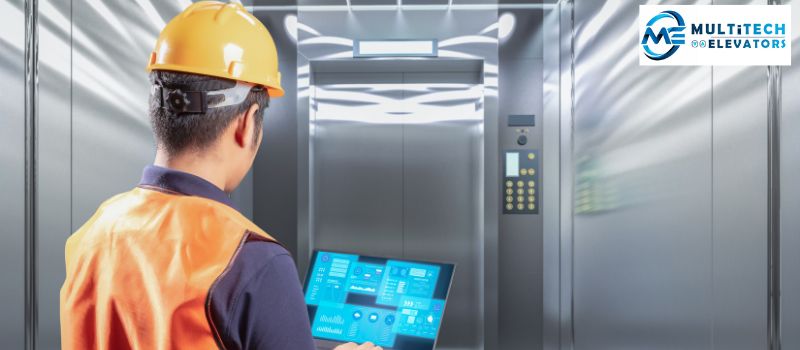How to Choose a Passenger Lift for Homes?
Choosing a passenger lift for a home involves several considerations to ensure it meets the household’s specific needs, enhances accessibility, and adds value to the property. Below is an in-depth guide to help you choose the right passenger lift for your home.
Understanding the Need for a Passenger Lift
Passenger lifts in homes can serve multiple purposes, from improving mobility for elderly or disabled family members to adding a touch of luxury. Here are some common reasons for installing a home lift:
- Mobility and Accessibility: For individuals with mobility issues, a home lift can provide independence and ease of movement between floors.
- Convenience: A lift can simplify everyday activities, such as carrying heavy items like groceries or laundry between floors.
- Future-Proofing: Installing a lift can be a proactive measure to ensure the home remains accessible as residents age.
- Property Value: A well-chosen lift can increase the market value of a home, making it more attractive to potential buyers.
Types of Home Passenger Lifts
Understanding the different types of home lifts is crucial for making an informed decision. The main types include:
-
Hydraulic Lifts:
- Pros: Smooth and quiet operation, can be installed in homes with up to six floors, flexible in terms of space requirements.
- Cons: Require a machine room, which can take up additional space and may involve higher installation costs.
-
Traction Lifts:
- Pros: Do not require a machine room, energy-efficient, suitable for multi-story homes.
- Cons: Can be noisier than hydraulic lifts, higher maintenance requirements.
-
Pneumatic (Vacuum) Lifts:
- Pros: Compact and space-saving, no need for a machine room or pit, easy to install.
- Cons: Limited to two or three floors, higher initial cost.
-
Platform Lifts:
- Pros: Ideal for short distances (one or two floors), relatively inexpensive, suitable for wheelchair users.
- Cons: Limited carrying capacity, slower speed.
Key Considerations for Choosing a Home Lift
-
Space Availability:
- Evaluate the available space for installation. Some lifts require more room for the shaft, machinery, or pit.
- Consider lifts that do not require extensive structural modifications if space is limited.
-
Weight Capacity:
- Determine the maximum weight the lift needs to carry. Standard home lifts usually support between 250 kg to 400 kg.
-
Number of Floors:
- Assess how many floors the lift needs to service. Some lifts are better suited for multi-story homes than others.
-
Design and Aesthetics:
- Choose a lift that complements the home’s interior design. Options include custom finishes, glass panels, and stylish cabin interiors.
-
Budget:
- Consider both the initial installation cost and ongoing maintenance expenses. Hydraulic and pneumatic lifts typically have higher initial costs, while traction lifts might incur more maintenance costs over time.
-
Power Consumption:
- Evaluate the energy efficiency of the lift. Traction lifts tend to be more energy-efficient, while hydraulic lifts consume more power due to their pumps.
-
Safety Features:
- Ensure the lift is equipped with essential safety features such as emergency lowering systems, alarms, interlocks, and safety sensors.
-
Installation Process:
- Consider the complexity of the installation. Some lifts, like pneumatic lifts, are easier and quicker to install than others.
-
Noise Levels:
- Take into account the noise produced by the lift during operation, especially if bedrooms or living areas are close to the lift shaft.
-
Local Building Codes and Regulations:
- Ensure the lift complies with local building codes and safety regulations. Consult with local authorities or a professional installer to avoid any legal issues.
Steps to Choosing the Right Passenger Lift
-
Assess Your Needs:
- Identify who will use the lift, the frequency of use, and any specific mobility needs.
-
Research and Compare:
- Research different types of lifts and compare their features, costs, and benefits.
-
Consult Professionals:
- Engage with lift manufacturers, suppliers, or contractors to get expert advice and quotations. They can also help with site assessments and feasibility studies.
-
Site Survey:
- Arrange for a professional site survey to evaluate the structural requirements and constraints of your home.
-
Customization Options:
- Discuss customization options with the supplier to ensure the lift matches your aesthetic preferences and functional needs.
-
Check References and Reviews:
- Look for reviews and references from previous customers to gauge the reliability and quality of the lift and the installer.
-
Plan for Maintenance:
- Understand the maintenance requirements and costs associated with the lift. Ensure you have access to reliable maintenance services.
-
Consider Future Needs:
- Think about how your needs might change in the future. A lift that can be easily upgraded or adapted might be a better long-term investment.
Installation and Maintenance
-
Installation Timeline:
- The installation time can vary depending on the type of lift and the complexity of the installation. Hydraulic lifts might take longer due to the need for a machine room.
-
Permits and Approvals:
- Secure any necessary permits and approvals from local authorities before beginning installation.
-
Professional Installation:
- Ensure the lift is installed by certified professionals to guarantee safety and compliance with regulations.
-
Regular Maintenance:
- Schedule regular maintenance checks to keep the lift in good working condition and to prolong its lifespan. Maintenance should include inspections, cleaning, lubrication, and any necessary repairs.
Conclusion
Choosing a passenger lift for your home is a significant investment that requires careful planning and consideration. By understanding your specific needs, researching different types of lifts, consulting with professionals, and considering future requirements, you can select a lift that enhances accessibility, convenience, and value in your home. Remember to factor in space availability, weight capacity, budget, safety features, and maintenance needs when making your decision.



